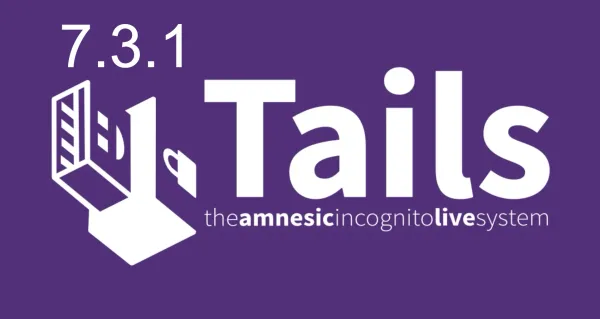Vaultwarden: Stop Feeding the Surveillance Economy That's Stealing Your Life
Cloud password managers aren't protecting your data, they're collecting it for profit while making you the product in a surveillance economy that profits from your digital enslavement.

Your password manager is surveillance infrastructure disguised as a security tool. Every cloud-based service, LastPass, 1Password, Dashlane, operates the same business model: collect your most sensitive data, store it on servers you don't control, and monetize your digital behavior while hoping their security theater holds up. When I talk about Bitwarden in this article I'm NOT referring to the self-hosted version.
It never does.
The business model guarantees failure.
The Surveillance Economy Business Model
Commercial password managers generate revenue through subscription fees, but the real profit comes from data aggregation and behavioral analysis. They know every website you visit, when you access accounts, password change patterns, and device usage across your digital life.
1Password's privacy policy admits they collect "information about how you use our service" and share data with "business partners." Dashlane's telemetry tracks "feature usage, user behavior, and service performance." These are they're features designed to extract value from your digital activity.
LastPass pushed users toward cloud sync specifically to capture this data. The company could have built offline-only password storage, but surveillance capitalism demanded cloud infrastructure for data harvesting. Security was always secondary to the business model.
LastPass: The Inevitable Outcome
LastPass got completely destroyed between August and October 2022. The timeline demonstrates why trusting corporations with authentication infrastructure is operational suicide:
LastPass Destruction Timeline
Federal investigators now link hundreds of millions in cryptocurrency theft directly to this breach. Criminals continue extracting value from stolen vault data, cracking master passwords and draining accounts stored in "Secure Notes."
The company had 2-4GB RAM servers, 11-container microservice architecture, Microsoft SQL Server databases, and enterprise security teams. None of it mattered because the business model prioritized growth over actual security.
What Self-Hosting Actually Means
Self-hosting means running software on infrastructure you control. Instead of sending your passwords to LastPass servers, you deploy Vaultwarden on your own hardware, a VPS, dedicated server, or home lab setup.
Your password database never leaves your network. No corporate surveillance, no quarterly growth targets demanding feature bloat, no shareholders pushing for data monetization. The software serves one purpose: secure password storage under your operational control.
This creates new responsibilities. You handle security updates, backup strategies, and infrastructure maintenance. The tradeoff is eliminating trust relationships with entities whose incentives don't align with your security interests.
Vaultwarden Technical Architecture
Vaultwarden reimplements Bitwarden's server API in Rust with SQLite storage. It's a ground-up rewrite optimized for self-hosting rather than venture capital scaling.
The entire application runs in a single Docker container consuming ~100MB RAM and ~50MB disk space. Compare this to official Bitwarden's 11-container deployment requiring 2-4GB RAM, 12-25GB storage, and Microsoft SQL Server licensing.
Core Features:
- Full Bitwarden API compatibility (works with all official clients)
- SQLite database (single file, atomic transactions, no external dependencies)
- WebSocket support for real-time sync notifications
- Send feature for encrypted file/text sharing (500MB files, 1000-character texts)
- Organization management (collections, user roles, group permissions)
- Admin panel for user/organization management
- LDAP/Active Directory integration support
- Custom password policies and security settings
Security Implementation:
- AES-256 encryption for vault data
- PBKDF2 key derivation (configurable iterations)
- Two-factor authentication (TOTP, WebAuthn, Duo, email)
- Failed login attempt rate limiting
- Admin panel access restrictions
- IP allowlist/blocklist support
- Secure password generation with customizable rules
Commercial Password Manager Comparison
The fundamental difference is control. Commercial providers can change terms, increase prices, shut down services, or get acquired by surveillance companies (LastPass → LogMeIn → GoTo). Your passwords become hostage to corporate decisions.
Advanced Vaultwarden Features
Admin Panel Access: The admin interface runs at /admin with configurable authentication. Disable it entirely for maximum security or restrict by IP address. Controls include user management, organization oversight, and system configuration.
Organization Structure: Create collections for password grouping, assign user roles (Owner, Admin, User, Manager), and manage group permissions. Teams can share credentials without exposing individual vaults.
Send Implementation: Generate encrypted links for secure data transmission. Files up to 500MB, text up to 1000 characters, configurable expiration times, and optional password protection. Data encrypts client-side before transmission.
API Endpoints: Full REST API compatibility with Bitwarden clients enables automation, bulk operations, and custom integrations. Import/export functions support CSV, JSON, and encrypted formats from major password managers.
Database Management: SQLite provides ACID compliance with WAL mode for concurrent read/write operations. Database file remains under 100MB for typical users. Backup requires copying a single file.
Security Policies: Configure password complexity requirements, two-factor authentication enforcement, and session timeout policies. Failed login attempts trigger automatic IP blocking with configurable thresholds.
Performance and Resource Usage
Vaultwarden operates efficiently on minimal hardware. A $5/month VPS (1GB RAM, 25GB storage) handles hundreds of users with room for other services. Home deployment on Raspberry Pi 4 works for family-scale usage.
Measured Performance:
- Memory usage: 50-150MB depending on active connections
- CPU utilization: <5% during normal operation
- Database operations: <1ms response time for typical queries
- Network bandwidth: <10KB per sync operation
- Storage growth: ~1MB per 1000 password entries
Commercial providers require constant internet connectivity for basic functionality. Vaultwarden syncs operate asynchronously, offline access works indefinitely, syncing occurs when connectivity returns.
Deployment and Migration Strategy
Infrastructure Options:
- VPS Deployment: DigitalOcean, Linode, or Vultr instances with Docker
- Home Server: Dedicated hardware or VM on existing infrastructure
- Cloud Self-Hosting: AWS, GCP, or Azure with container services
Basic Docker Deployment:
version: '3.9'
services:
vaultwarden:
image: vaultwarden/server:latest
container_name: vaultwarden
restart: unless-stopped
ports:
- "127.0.0.1:8080:80"
- "127.0.0.1:3012:3012" # WebSocket port
volumes:
- ./vw-data:/data
environment:
DOMAIN: "https://vault.yourdomain.com"
WEBSOCKET_ENABLED: "true"
SIGNUPS_ALLOWED: "false"
ADMIN_TOKEN: "your-secure-admin-token"
LOG_LEVEL: "warn"
Migration Process:
- Export existing password vault as CSV/JSON
- Deploy Vaultwarden instance with HTTPS
- Import data through web interface or API
- Configure browser extensions with custom server URL
- Verify data integrity and functionality
- Delete cloud accounts and revoke API access
Browser extensions require manual server configuration but maintain identical functionality. Mobile apps support custom server URLs in login settings.
OPSEC Implementation
Self-hosting creates attack surface responsibility. Commercial providers handle infrastructure security but maintain surveillance capabilities. Self-hosting eliminates surveillance while requiring operational competence.
Network Security:
- VPN-only access eliminates public internet exposure
- Wireguard provides encrypted tunneling with minimal overhead
- Fail2ban blocks brute force attempts automatically
- Reverse proxy (Nginx/Caddy) handles HTTPS termination and security headers
Data Protection:
- Automated encrypted backups to multiple locations
- Database encryption at rest with LUKS or similar
- Log rotation and secure deletion of temporary files
- Regular security updates and dependency management
Access Control:
- Strong master passwords with key derivation hardening
- Hardware security keys (WebAuthn/U2F) for two-factor authentication
- IP allowlists for admin interface access
- Session timeout configuration and concurrent login limits
The Sovereignty Decision
Running your own password manager represents a philosophical choice about digital autonomy. Accept responsibility for your own security rather than outsourcing it to entities whose business models depend on data extraction.
Commercial password managers optimize for corporate metrics: user acquisition, retention rates, and revenue per customer. Security becomes a marketing feature rather than core functionality. The LastPass disaster proves this approach's inevitable outcome.
Vaultwarden optimizes for a single purpose: secure password storage under user control. No shareholders demanding growth, no privacy policies changing quarterly, no acquisition targets transforming security tools into surveillance platforms.
The technical implementation is straightforward. The operational commitment separates individuals who value digital sovereignty from willing participants in surveillance capitalism.
Your authentication infrastructure controls access to your digital life. Keep it under your control or accept that someone else's business model defines your security posture.
The code is at github.com/dani-garcia/vaultwarden. The documentation covers deployment scenarios from home servers to cloud infrastructure. The choice between digital sovereignty and convenient servitude is yours to make.




